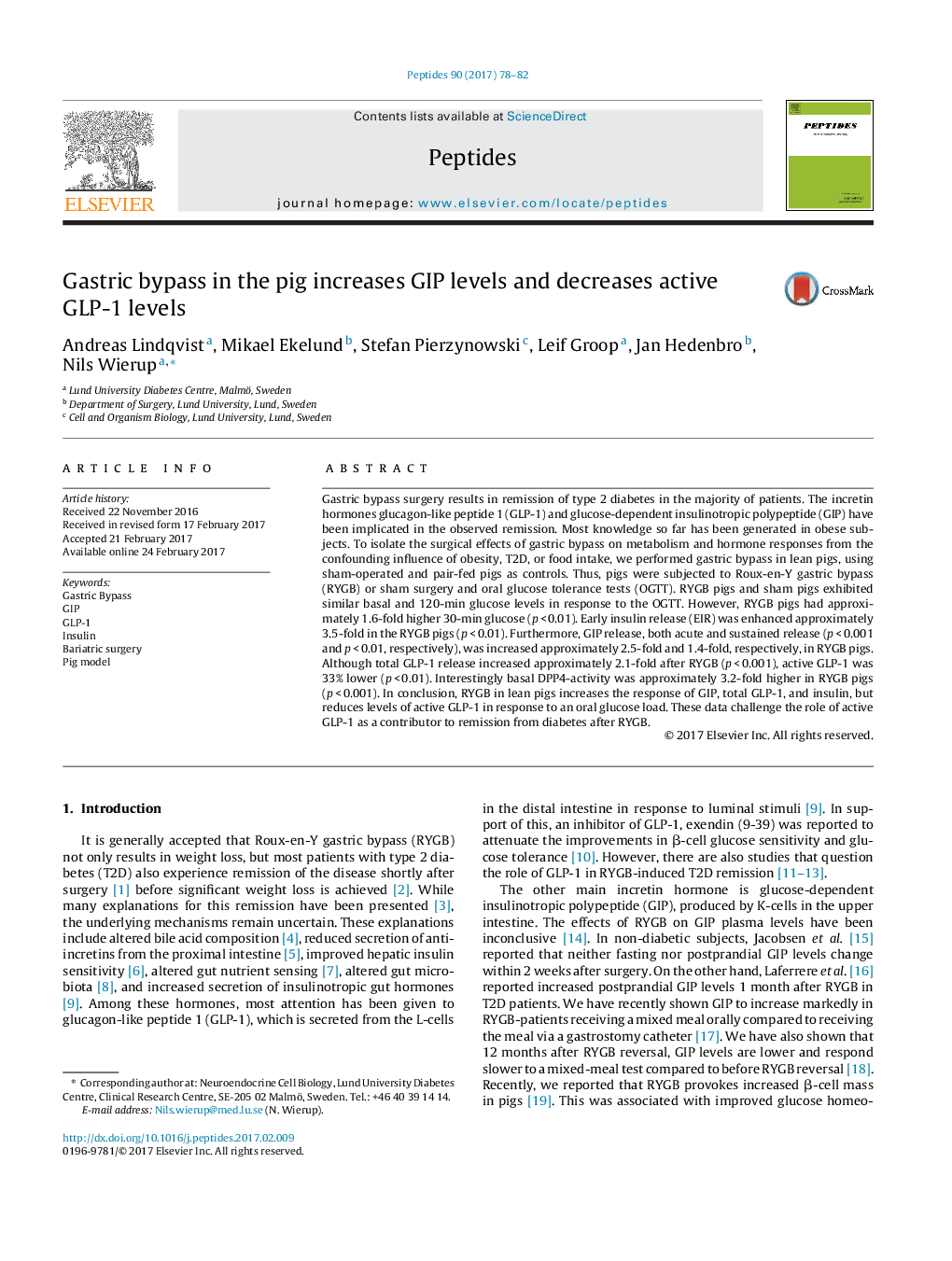| کد مقاله | کد نشریه | سال انتشار | مقاله انگلیسی | نسخه تمام متن |
|---|---|---|---|---|
| 5514806 | 1541689 | 2017 | 5 صفحه PDF | دانلود رایگان |

- Gastric bypass in pigs yields higher 30-min glucose in response to an oral glucose test.
- Total GLP-1 and GIP are increased in gastric bypass-operated pigs compared with sham-operated pigs in response to an oral glucose tolerance test.
- Active GLP-1 is decreased in gastric bypass-operated pigs compared with sham-operated pigs in response to an oral glucose tolerance test.
Gastric bypass surgery results in remission of type 2 diabetes in the majority of patients. The incretin hormones glucagon-like peptide 1 (GLP-1) and glucose-dependent insulinotropic polypeptide (GIP) have been implicated in the observed remission. Most knowledge so far has been generated in obese subjects. To isolate the surgical effects of gastric bypass on metabolism and hormone responses from the confounding influence of obesity, T2D, or food intake, we performed gastric bypass in lean pigs, using sham-operated and pair-fed pigs as controls. Thus, pigs were subjected to Roux-en-Y gastric bypass (RYGB) or sham surgery and oral glucose tolerance tests (OGTT). RYGB pigs and sham pigs exhibited similar basal and 120-min glucose levels in response to the OGTT. However, RYGB pigs had approximately 1.6-fold higher 30-min glucose (p < 0.01). Early insulin release (EIR) was enhanced approximately 3.5-fold in the RYGB pigs (p < 0.01). Furthermore, GIP release, both acute and sustained release (p < 0.001 and p < 0.01, respectively), was increased approximately 2.5-fold and 1.4-fold, respectively, in RYGB pigs. Although total GLP-1 release increased approximately 2.1-fold after RYGB (p < 0.001), active GLP-1 was 33% lower (p < 0.01). Interestingly basal DPP4-activity was approximately 3.2-fold higher in RYGB pigs (p < 0.001). In conclusion, RYGB in lean pigs increases the response of GIP, total GLP-1, and insulin, but reduces levels of active GLP-1 in response to an oral glucose load. These data challenge the role of active GLP-1 as a contributor to remission from diabetes after RYGB.
Journal: Peptides - Volume 90, April 2017, Pages 78-82